A discussion about 30 years of Tanz im August
Interview: Claudia Henne
Interview: Claudia Henne
In 1988, Nele Hertling was responsible for the European Capital of Culture programme, which turned West Berlin into a giant working space for artistic experiments, including ‘TanzWerkstatt’ with several dance workshops. The following year Tanz im August evolved out of this experience with Hebbel-Theater as its powerhouse. It is time to ask four experienced women from different generations, who have spent their lives with and in contemporary dance, to sit down at a table.
Claudia Henne: What runs through your mind when you think about the festival Tanz im August?
Adolphe Binder: Well, it’s a festival that actually initiated me into dance. When I moved to Berlin, in the middle of the 90s, this was – and still is – the platform where I gained my knowledge on the artform itself. My background is in theatre. I had no intention of working with dance in the first place, so the festival was one of my major initiations into the artform, and it was the huge possibility not to have to travel the world and still have access to the variety and diversity of the artform and all the connected disciplines. That has remained, despite all changes.
Robyn Orlin: For me Tanz im August is a great way to get to see diverse works. I love Berlin in August – if I’m not working – I love to come to the festival and see many different works from everywhere. It’s refreshing, and offers a window into the current dance world.
Virve Sutinen: It was a festival that I visited frequently. And I think it had to do with coming from Helsinki. First of all it was near, but it was not only near; the programme was so diverse that it kind of made sense to come over. It was a mixture of everything which kind of resonated with me, obviously. And it also felt kind of homey, because it’s just like Finland. It’s between the East and the West, so there was a certain familiarity in the place and also in the programming.
CH: Nele, when you founded the festival in 1988, you showed dance and offered workshops. Was this new at that time?
Nele Hertling: It was absolutely new, and looking back it came into my mind how rare dance education outside of ballet school really was at that time. In the context of the European Capital of Culture 1988, we had the chance to spend quite a lot of money. The first idea was really to combine presentation and education, because it was before the Wall came down – nobody believed the Wall would come down – so the need to really include Berlin-based artists and dancers into the international context was one of the main ideas.
CH: Is this still important today?
VS: I think less and less. But of course every festival has its own mission and reason to be. During the last 30 years, so many educational initiatives and institutions have been founded everywhere that I felt the festival could do other things better. We have been concentrating on new ways of facilitating the dialogue between artists and their audiences, which definitely has to do with learning and has an educational value.
RO: It's difficult having a festival and an educational structure at the same time, but possible and good for both structures to feed off one another. But to be honest, it’s really exhausting for the artists to concentrate on both at the same time over such a short period. It becomes very trying, and not the best circumstances to show work or teach workshops. An educational aspect is important, and needs more space where there is time for both the artists and participants to nourish and flourish.
AB: Now with Tanztheater Wuppertal we developed our own programme to reach out into the city etcetera. We offer more and more workshops, but not as an educational element, more as a participative element, to share. So we’re not teaching anything or anybody, we’re just sharing information and we’re inviting a community of professionals, non-professionals, semi-professionals, to just dive into the making of the works and to work with artists who then represent a certain author and handwriting on stage. So it’s very interesting to see the sharing and what it does to people.
RO: Festivals always create a discourse. It’s about finding a place for the discourse, not how to nip that possibility in the bud. Discussions with the public can be awkward but I find them interesting. Hopefully the piece talks for itself, but it's great to interact with the public.
NH: I would like to add something to the word discourse. When we travelled around to find companies to invite in ’88, none of them – already really well-known choreographers – had ever seen the work of any of the other invited companies. So we made them stay for nearly three weeks, 18 days, all together in Berlin. We rented a place, and it was their duty to stay there all day long together and to really go into a discourse on their own background, their development, their aesthetic or their ideas. So it was a broader educational discourse than just workshops, to bring professional dancers into a kind of debate, exchange and long-term collaboration. I mean, talking to dancers today, I very often hear: I would love to stay and see more of the work of the others and get into a better discourse. So I think it would be good to have it – in another way – but to have it again.
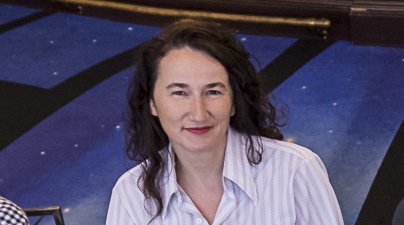
Adolphe Binder, intendant and artistic director of the Tanztheater Wuppertal Pina Bausch from 2017-2018, from 2011–2016 artistic director of the Göteborg Danskompani.
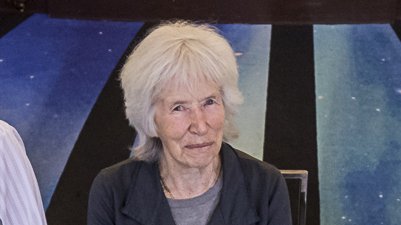
Nele Hertling, former director of the Hebbel-Theater and responsible for the festival Tanz im August from 1989–2003.
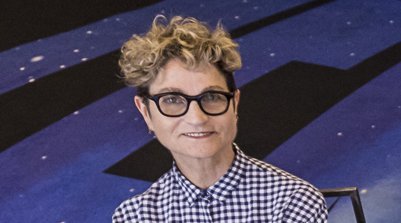
Robyn Orlin, South African dancer and choreographer who works a lot in France, and lives in Berlin and Johannesburg.
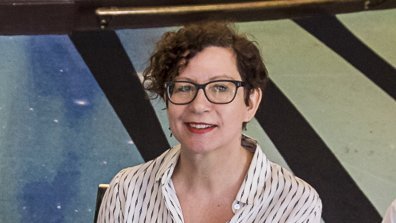
Virve Sutinen, artistic director of Tanz im August since 2014, from 2008–2013 director of the Dansens Hus in Stockholm.

VS: It’s very hard to get anyone stay for two weeks in the middle of a tour – it doesn’t really work that way anymore. We are often organising tours for the companies as we are working at least with five other festivals parallel. We try to think ecologically – I think it’s just ridiculous to bring someone from Australia for a one-off. This also creates a sustainable economy for the artists. I would say that the master discourse of the festival is still the same: opening up new worlds, bringing new artists and keeping up with the contemporary issues. In the last 30 years, the dance sector has grown tremendously. I’m sometimes afraid of exhausting the artists with my enthusiasm for talks and discussions, and I wonder how much we can ask them to contribute. The biggest educational benefit is deeply embedded in the artistic programme, in the curational process and practice. It all begins with what is meaningful to present in this time and place, in this particular context of Berlin.
AB: Ecological issues are connected to how you prepare a tour. I’m trying to travel less and have more Skype meetings. I’m here now; I had to travel. It raises the question of how big can the formats be and how environmentally friendly is the whole thing at the end of the day. It’s a big question to be reflected upon. But in the end it’s still important to experience the work live.
CH: Live, that’s still the point. So the digitalisation of pieces – YouTube, Vimeo, whatever, isn’t really a way out?
VS: See, that’s the challenge for curating. And that’s also a challenge for artists. Instead of going to London to see a piece, a lot is available online. And it’s there for all. So it poses the question: what do you need to bring? I think it will also do something to the art form. It forces us to think what it is that other medias cannot offer. It makes us more aware of what really is our core business: the ephemeral art.
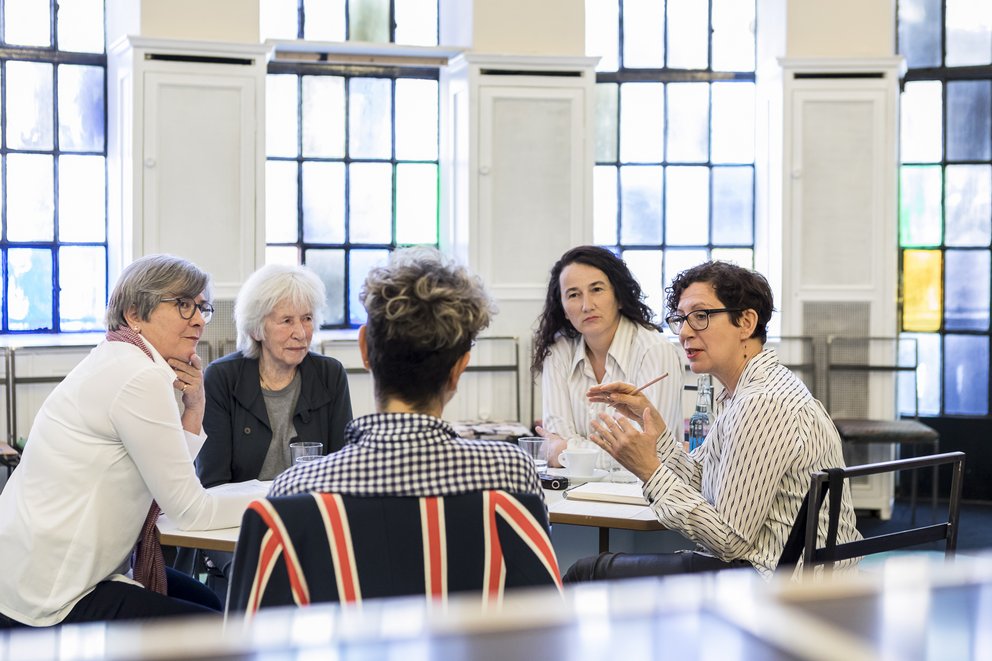
AB: For me of course the cinematic form cannot replace the live experience. But what happened in the case of Tanztheater, through the film of Wim Wenders? There was a huge expansion into audiences and people who never ever went to see dance performances. A huge interest was created. So if you ask now what is the motivation for some of our audience, many are motivated through the movie; they want to feel and experience it live, they want to see the company. I believe there will be a strong raise in the gathering, in the meeting point, being in the room with other human beings and having this experience to share.
RO: In South Africa we always say, “Keep a theatre going”. Never darken a theatre. Because we know it’s going to get turned into a parking garage. It’s so vital and so important to keep it going, that you never close the theatre. If it goes dark, that’s it! It’s in my blood to keep live performance alive, I integrate a lot of media in my work anyway, so I tend to access a different public.
NH: I think it’s two very different things. All the digitalised art presentation you can find – for me it’s more information. But being together in a space, to have a live performance, is something completely different.
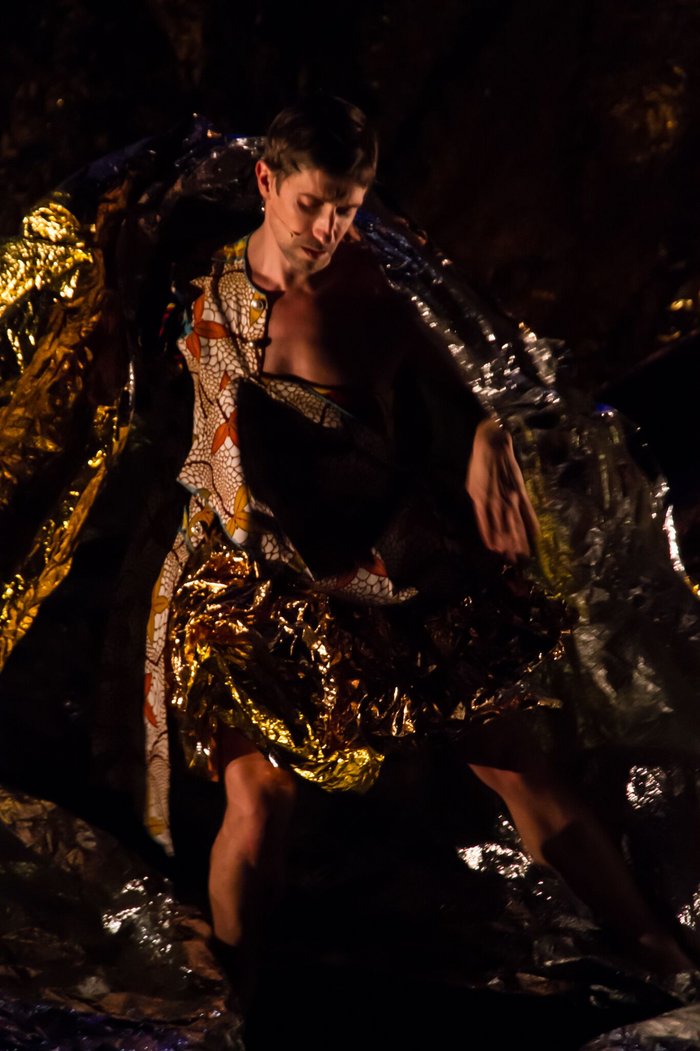
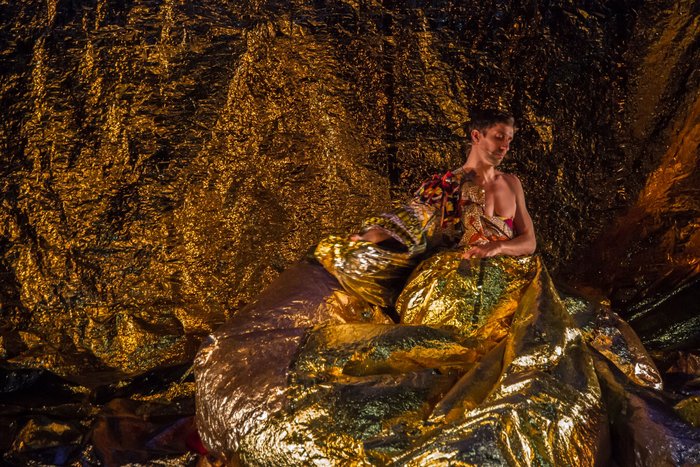
CH: Virve, is money taking more and more over the programming behind the scene and losing the flavours of a place, of a city, because you have to make money with a festival? Even if you are funded?
VS: I don’t think so. I think just the overall professionalism has made it bigger. We’re now co-producing international and Berlin-based artists. Quite a part of the budget is put into audience formats, and we’re not asking people to do that for free. Or, you know, we develop those other kinds of contents. The retrospectives for example are two-year long processes of intensely working with an artist, generating research, publications and hopefully a deeper sense of choreographic practice. So it’s a very different process from anything else we do. Most of our work is harvesting a lot of information from the global network that we operate in. Content development and contextualisation are much slower and labour-consuming work than just presenting. On top of that you have a bigger task in connecting contemporary dance to the society, to urgent issues in society, to the history, to the future ... One of the experiments for me is to see how much audience there is for contemporary dance. And I have been so happy that we have actually managed to have a bigger and bigger audience every year. I want to prove wrong those who think contemporary dance is marginal.
CH: But wouldn’t you say that this is a problem? That the festival becomes so overloaded in a way?
VS: I think it’s easy to see that we’re reaching out for different audiences. It’s also true that there is more resources, and for me that means we have an obligation to make contemporary dance more known amongst the general public and to look out for new audiences. One cannot reach out for new audiences without revising the programme lines by including different aesthetics, styles and proposals. The diversity and the size of the festival comes out of our effort to make contemporary dance more accessible to as many as possible. We’re working with everyone, from emerging independent artists to established ones, with big, medium and small companies, and we’re trying to cover the whole world, basically. Maybe the ambition driving us has grown, and therefore the festival has become bigger. The overload in my way of working is also this kind of carnivalistic moment for the city.
CH: What is the political impact of festivals? Is this questions discussed between festival makers?
VS: I think we just accept it as part of our mission. I don’t think we even question that anymore. Especially the European festivals. There’s a history for the curating of festivals in Europe, an ongoing dialogue about what festivals are and how they are part of the city structures, how they are part of the new cities now competing with each other, how much the culture has a role in that and how we are maybe instrumentalised, or how we can maybe take advantage of that.
CH: Nele, is it part of a cultural diplomacy, having dancers and choreographers coming from all over the world to a place, for example Berlin?
NH: Today we’re confronted with a huge Euro-scepticism or anti-European feelings, even across European borders. I lobby every day for the role of art and culture in overcoming these new, extremely dangerous emotions and facts. I think in my early times it was interesting because we didn’t know what was going on in Europe, because there were not so many possibilities. There were not many festivals on contemporary dance, you couldn’t travel so easily, you couldn’t go to the East. So there was another need to really present developments from other countries. Today, for me it’s really a much more politically based need. To make people aware that even if there are borders of taste, of tradition, of history, it’s easy to overcome them in art. There is a completely new, really important need to have festivals as places of international meeting places, of information on building tolerance, on all that. And I don’t see anything other than art that can do it today.
CH: Adolphe, when you come to the festival this year, you’re not showing a piece by Pina Bausch, but one of a Norwegian choreographer. Is this your step into a new aesthetic, a new dance world?
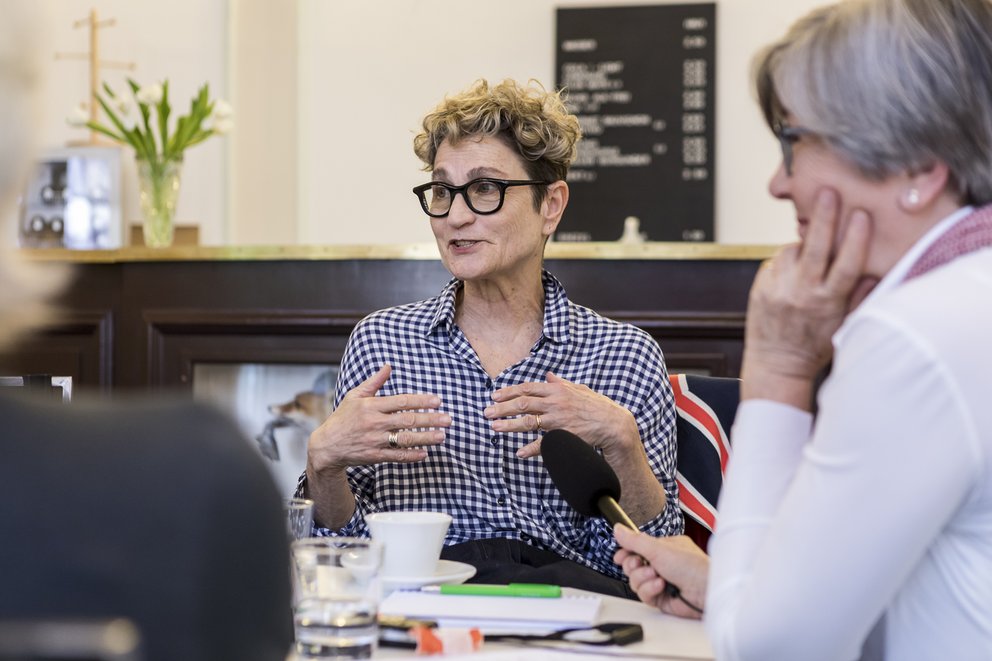
AB: It is definitely a step into a new handwriting but not necessarily into a new genre. Because what Alan Lucien Øyen is representing is dance theatre, in a very specific way. And the blending of different forms of expression through text, through cinematic forms, through movement, through conceptual approaches, through research – I find it connects very well to the spirit and the DNA of the Tanztheater Wuppertal Pina Bausch. And this is why I’m so happy about this partnership – because we wanted to present something that represents the step into the future after the company hasn’t been creating full-length work in a long time. But no, it’s not a change of genre; it’s just a different angle, and with a similar interest, let’s say. Actually it wasn’t easy, if I might say, to find people who I felt had the skill to really engage in that fully.
CH: Robyn, you’re coming to Tanz im August this summer. What is your piece “Oh Louis...” about?
RO: The piece that I am bringing to Tanz im August is very important for me. I have finally accepted that I live in Europe, and it’s the first piece that I have done without South Africans. I wanted to look at the French Louis XIV as a way to understand the history of dance in Europe. That was the beginning of my journey with Benjamin Pech and Loris Barrucand, but the ‘code noire’ (a set of rules created by the king stating how to treat slaves), kept on surfacing in my research and consciousness. So I found a way – I hope – to use the piece as a meeting point for Europe and Africa.
